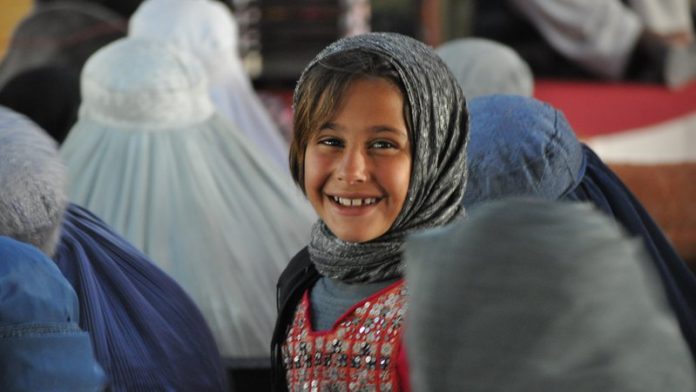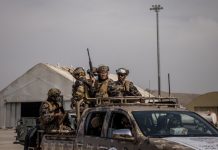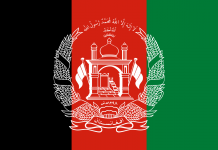This article is written by Anushka Singhal, a student of Symbiosis Law School, Noida. In this article, the author tries to throw some light on the legal, political and social crises in Afghanistan. She tries to briefly explain the whole situation and the history behind it.
Table of Contents
Introduction
Afghanistan is going through one of the worst humanitarian crises. America has withdrawn its troops from Afghanistan. Other countries are shutting down their embassies. President Ashraf Ghani has fled and now the Taliban has declared its rule in the country. Civilians are fleeing the country, bordering countries have sealed their borders and there is ruckus all around. This is the current scenario in Afghanistan. But how did it start? What is the role of America in all of this? Who is the Taliban and why are people fleeing? Let us study all of this in detail.
History of Afghanistan
Afghanistan is a landlocked country situated between the present-day countries of Turkmenistan, Pakistan, Uzbekistan, Tajikistan and Iran. Monarchy ended in 1973 in Afghanistan, when Prime Minister and President Mohammad Sardar Daoud Khan came to power. This new government was short-lived and shortly the Prime Minister was removed by a military coup organized by the People’s Democratic Party of Afghanistan (PDPA). Afghanistan was renamed the Democratic Republic of Afghanistan. PDPA joined hands with the Soviet Union to carry out economic reforms in the country. PDPA did atrocities on people and did not want people to follow traditional Islam. This led to chaos in the country and soon there was a civil war. The Soviet Union was an ally of the government and had appointed its military men to help PDPA. Therefore, the Soviet Union occupied Afghanistan. The United States of America was not satisfied with the Soviet occupation of Afghanistan and it started funding Mujahideen, a militant group of Afghanistan that arose during the civil war. The Soviet Union withdrew from Afghanistan in 1989. Civil war continued in Afghanistan and an ultraconservative political and religious faction called ‘Taliban’ emerged in Afghanistan. It ruled Afghanistan from 1996-2001 when a US-led regime toppled down the Taliban government after the 9/11 attack in the United States by the Taliban. The US decided to end these terrorist groups and started a war in Afghanistan. Then, the United States and North Atlantic Treaty Organization (NATO) started rebuilding Afghanistan. Democracy was established in Afghanistan and the new Constitution was adopted in 2004. Since then, the US and NATO have had their troops stationed in Afghanistan. Recently the US decided to withdraw and NATO also decided to do the same, following the US’ footsteps.
Who is the Taliban?
Taliban which means ‘students’ in Pashto. It is an extremist Muslim Militia movement that arose against the Soviet Union in Afghanistan. The Taliban were founded in southern Afghanistan by Mullah Mohammad Omar and it wanted to control the country after the withdrawal of the Soviet Union. It expanded itself by admitting members from the US-funded Mujahideen in its group. Taliban remained in power for five years and within this period, it tried to establish a strict ‘Sharia’ regime in Afghanistan. It banned women from going outside without a male relative, made burqas compulsory and banned western books and shows. Public executions and flogging became a common phenomenon. The world did not recognise the Taliban as the leaders, except for four countries, including Pakistan, which gave recognition to their rule during those five years. Now, the Taliban has again come into power in Afghanistan as the US troops have withdrawn from the country.
The US role
The US has played a major role in the Afghan crisis. Firstly, it funded Mujahideen to counter the Soviet Union. After that, Mujahideen slowly grew into a terrorist group with arms and ammunition. John K. Cooley, the author of ‘Unholy Wars: Afghanistan, America and International Terrorism’, referred to this as “America’s love affair with Islam.” The US realised its mistakes when Osama Bin Laden, the head of Al Qaeda, crashed planes into landmark buildings of New York and Washington. It is said that Al Qaeda and other terrorist groups grew out of those Mujahideens that were funded by America, Pakistan and other countries. After the attack, President George W. Bush led an invasion of Afghanistan supported by an international coalition to eradicate al-Qaeda and hunt down Bin Laden. Osama Bin Laden was killed in Pakistan but the US continued to stay in Afghanistan and fight the Taliban.
The early combat and retreat of the Taliban
In the beginning, the US and other NATO allies started bombing the Taliban forces in Afghanistan. Operation Enduring Freedom was launched. The US engaged in air combat while the fight on land was done by the Afghans. The Taliban regime lost in 2001. Taliban surrendered in Kandahar and its leader Mullah Omar fled the city.
Reconstruction of Afghanistan
Operation Anaconda was launched as ground combat in Afghanistan. It helped in dealing with the Taliban to a great extent. After the Taliban lost, the focus shifted to reconstructing Afghanistan. The US Congress appropriated over $38 billion for humanitarian and reconstruction assistance in Afghanistan between the years 2001-2009. Hamid Karzai was chosen as the interim president. In 2003, the US said that now its focus would be on reconstruction and not on combat. In 2003 only 8000 soldiers were stationed in Afghanistan. Even NATO and the United Nations played an important role in reconstructing Afghanistan.
In 2004, Afghanistan framed its Constitution and the first elections after 1969 were held. Hamid Karzai was elected as the President. Tensions started growing in 2006 and there was a tussle between NATO and the US over whether they should decrease the number of soldiers in Afghanistan or should they send more of them. NATO started focusing on strengthening the Afghan forces rather than on deploying its own. NATO launched the Resolute Support Mission (RSM) to train, advise and assist Afghan forces.
Political treaties and strategies
In 2009, Barack Obama sent more troops to Afghanistan. He increased the number of soldiers in Afghanistan. Along with it, the former president chalked a plan for dropdown in 2011 and even NATO’s International Security Force (ISAF) ended in 2014, and it handed over the security of Afghanistan into the hands of the Afghan Government. Obama’s rule ended and Donald Trump was appointed as the President. He decided not to go ahead with the dropdown as it could lead to the terrorist insurgency. He appointed more troops, especially in the rural areas.
US-Taliban Peace Talks
In 2019, negotiations between the Taliban and the US took place in Doha. The US proposed the withdrawal of more of its troops upon the promise of intra-Afghan talks and a ceasefire in Afghanistan. The talks ended abruptly. In 2020, US envoy Khalilzad and the Taliban’s Baradar signed an agreement that paved the path for military dropdown in Afghanistan on the condition that the Taliban would not use the country for terrorist activities. Joe Biden came to power and he said that he would not withdraw the troops by 1 May 2021 as per the agreement, but he would pull the troops by September 2021.
Human rights at stake in Afghanistan
Human rights are those rights that we possess by virtue of us being human beings. These rights include the right to life, food, education, health, etc. The Universal Declaration of Human Rights (UDHR) has compiled all these rights and formed a declaration that several countries have signed and ratified. Afghanistan has been facing the brunt of war since the 1900s and thus, human rights have been at stake in Afghanistan for a long time. When the Taliban came into power for a brief period of five years, the people saw a few of the worst human rights violations. Women were deprived of the right to education and liberty. Girls were forced to sit back at home and wear a particular type of outfit when going out. People were killed in the open and everyone had to abide by the Sharia laws. Afghanistan witnessed human rights violations not only in those five years but has been suffering from these problems for a long time. According to the Afghanistan Independent Human Rights Commission (AIHRC), more than 100 cases of murder of women were reported in the year 2019. Human rights defenders have also been the target of terrorist organizations. According to the Afghan Human Rights Defender Organization (AHRDC), a total of 17 human rights defenders have been killed from September 2020 to May 2021. COVID-19 exposed the fragile healthcare system in the country and there were no proper facilities even for testing. According to the International Organization for Migration, there were 4 million people internally displaced in Afghanistan in 2020. Even the countries bordering Afghanistan were sending the refugees back during 2019 and 2020 and were violating the principle of non-refoulement. After the fall of the government and the rise of the Taliban, these countries have sealed their borders. Freedom of speech and expression has been curtailed and women reporters have been asked to leave their jobs. Recently, the UN Human Rights Chief has expressed his concern over the rising tension in Afghanistan. He urged the international community to join hands and defend Afghanistan. Several people have lost their lives in the civil wars and presently too, mass killings have become common in Afghanistan.
World community and the Afghanistan crisis
The present crisis will not only alter the political as well as social scenario in Afghanistan but will alter world politics altogether. The already existing refugee crisis will reach its worst level. According to the United Nations High Commissioner for Refugees (UNHCR), about 82.4 million people in the world are forcibly displaced. Syria has the largest displaced population. The recent Afghan crisis may make this country the epicentre of the refugee crisis. People are running for their lives. Let us see what the world community has in its platter for the Afghan refugees:
Iran
Iran is in the process of setting up refugee camps in its country. Iran has already stated that it will send the people back, once the condition improves. According to the UN’s refugee agency, Iran already hosts more than 2 million Afghans.
Pakistan
This country plans to set up camps at its borders to prevent the refugees from entering the country and burden the whole system.
Turkey
Turkey is reluctant about admitting more refugees in its country. It is interesting to note that Turkey stands on the highest pedestal when it comes to accepting refugees but this time, it has said that it will not admit more people.
United Kingdom
The UK plans to receive 20,000 refugees in the coming future and plans to resettle about 5,000 of them in the first year of their arrival.
United States
The US is laying the whole of its focus on evacuating people. Along with it, it has requested countries like Uganda, Kosovo, North Macedonia and Albania to provide temporary refuge to the people until the condition improves.
India
India has proposed an E-emergency X-Misc Visa for all Afghans. One can easily apply for visas online. India is not a signatory to the UN Refugee Convention 1951, therefore, it has no obligations to accept the refugees.
Conclusion
In recent developments, Afghanistan has been declared as the Islamic Emirate of Afghanistan. The national flag has also been changed and a new white flag with a shahadah has been adopted. The Taliban is ruling the country and there is no democratic government in the nation. Mullah Abdul Ghani Baradar, the co-founder of Taliban, has been appointed as the President. The world community has still not recognised the Taliban as the new government and it is unlikely that they will recognise it. Some countries like China have said that they will think of recognising the rule, once the situation stabilises. Taliban has a long history of turmoil and the abrupt US army withdrawal without ensuring the safety of Afghanistan has aggravated the situation. Afghanistan has been ruined by some foreign countries and now it is the responsibility of the world community to ensure peace in the nation. The United Nations (UN) has urged its Security Council to unite for the cause of Afghanistan and the United Nations Human Rights Council (UNHRC) is planning to discuss the humanitarian crisis in Afghanistan. Amidst all this crisis, one should remember what Gandhiji said, “You must not lose faith in humanity. Humanity is an ocean; if a few drops of the ocean are dirty, the ocean does not become dirty.”
References
- https://www.amnesty.org/en/location/asia-and-the-pacific/south-asia/afghanistan/report-afghanistan/
- https://web.stanford.edu/class/e297a/Afghanistan,%20the%20United%20States.htm
- https://www.cfr.org/timeline/us-war-afghanistan
- https://www.jstor.org/stable/466342
- https://www.jstor.org/stable/3567249
LawSikho has created a telegram group for exchanging legal knowledge, referrals, and various opportunities. You can click on this link and join:











